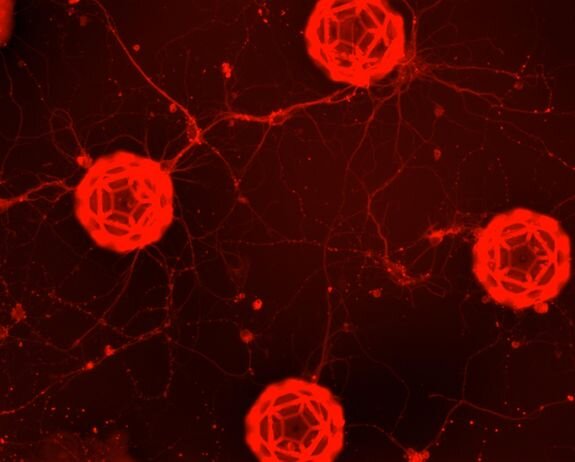Biofabrication: 3-D printing, sonic tweezers, and the creation of neurons in microscopic cages
Date: 11.5.2020
Microscopically small cages have been produced at TU Wien (Vienna) with grid openings only a few micrometers in size, making them ideal for holding cells and allowing living tissue to grow in a very specific shape. This new field of research is called biofabrication.
 In a collaboration with Stanford University, the researchers introduced nerve cells into spherical cage structures using acoustic bioprinting technology to allow multicellular nerve tissue to develop there. The researchers also created nerve connections between the cages. To control the nerve cells, sound waves were used as acoustic tweezers.
In a collaboration with Stanford University, the researchers introduced nerve cells into spherical cage structures using acoustic bioprinting technology to allow multicellular nerve tissue to develop there. The researchers also created nerve connections between the cages. To control the nerve cells, sound waves were used as acoustic tweezers.
In order to grow large numbers of nerve cells in a small space, the research team decided to use so-called "buckyballs" – geometric shapes made of pentagons and hexagons that resemble a microscopic football.
"The openings of the buckyballs are large enough to allow cells to migrate into the cage, but when the cells coalesce, they can no longer leave the cage," explains Dr. Wolfgang Steiger.
The tiny buckyball cages were manufactured using a process known as two-photon polymerization: a focused laser beam is used to start a chemical process at specific points in a liquid, which causes the material to harden at precisely these points. By steering the focal point of the laser beam through the liquid in a well-controlled way, three-dimensional objects can be produced with extremely high precision.























